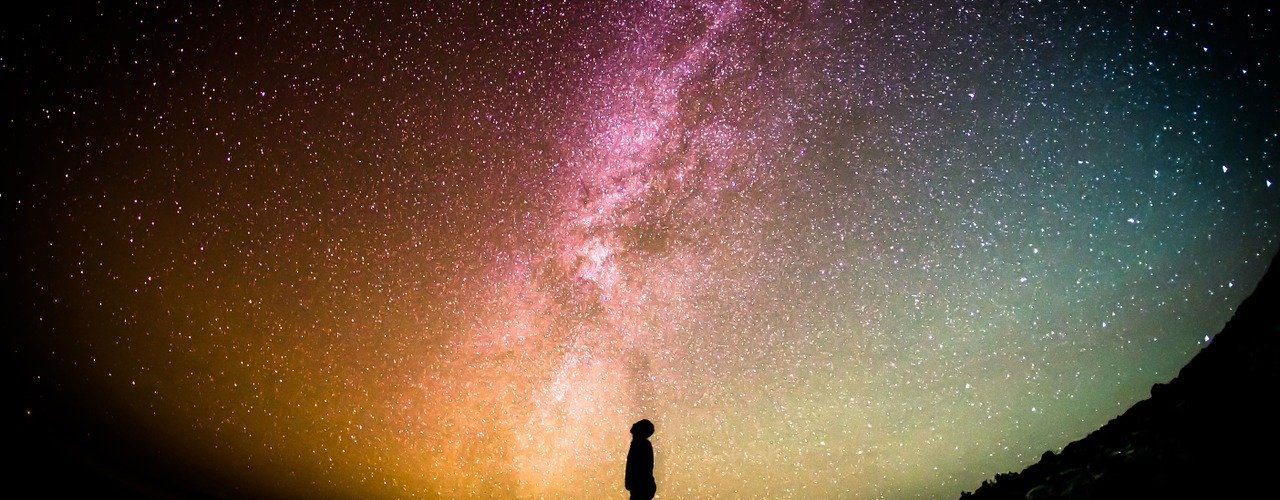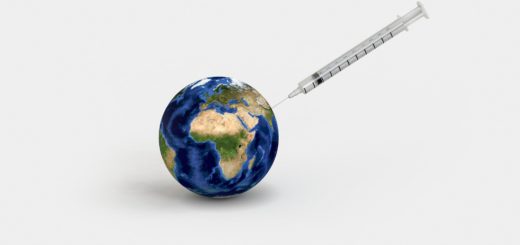Space vs Humans: are we ready to play among the stars?

I wonder what it’s really like.
Up there.
In Outer Space.
In 1969, David Bowie released his hit song “Space Oddity”, depicting the journey of Major Tom and his “tin can” into space. Nine days later, families around the globe crowded in front of TVs and radios, tuning in with anticipation, listening to a similar journey unfold. For on that day, the 20th July 1969, two Apollo 11 astronauts, Buzz Aldrin and Neil Armstrong, set foot on one of the most exotic and unreachable locations known to humans…. the moon1. By taking those first trepid steps onto an entirely alien landscape, they left space-boot dents in an otherwise untouched land. I always wondered what they thought in that moment, floating peculiarly among the stars as they were gazing through the visors of their spacesuits across a world so profoundly different from here on Earth.
A brief history of human forays into space
Humans first began launching living things up into space on unused WW2 missiles in the 40’s. First, we went small with fruit flies in 1947, then a bit bigger with a monkey named Albert II (1949). Approximately 8 years later the Soviet Union launched the Sputnik II rocket, containing something slightly larger, Laika the dog. Sadly, Laika never made it back to Earth alive. Throughout the 60’s and early 70’s, the interest in sending humans into space skyrocketed, with cosmonaut Yuri Gagarin launched successfully into space in 1961, followed shortly by John Glenn (1962) then Valentina Tereshkova (1963; incidentally also being the first woman) orbiting the Earth. And with more achievement, came more ambition; humans wanted to walk in space. So, in 1965, cosmonaut Alexei Leonov (in March) and astronaut Ed White (in June) successfully completed spacewalks. Next, we set our sights on the moon. In 1968, Frank Borman, William Anders and James Lovell orbited the moon culminating with the lunar landing in 1969. But that wasn’t enough. In 1971, astronauts David Scott and James Irvin drove on the moon in the Lunar Roving Vehicle, travelling at speeds of up to 12 km/hr!
Towards the latter part of the 80’s and 90’s, we began to think more long term, with the assemblies of the Russian space station Mir (operating from 1986-2001) and the International Space Station (ISS; beginning in 1998). Both these instalments would allow humans to live continuously in space. Today, the ISS has been inhabited for almost 20 years2!
The dawn of the Astro-traveller
Once humans made it all ~0.239 million miles to the moon3 then back again, it was only a matter of time before we commercialised it. Now, in the 21st century, we are witnessing the birth of ‘space tourism’ and ‘private astronauts’. The very idea of space and its exploration has inspired countless books, TV shows and blockbuster films; it’s no wonder people want to know what all the fuss is about!
To date, a grand total of 7 individuals (excluding trained astronauts and cosmonauts of course!), have jetted off into orbit, and none since 2009. In 2001, Dennis Tito, became the first ever ‘space tourist’. The American businessman paid the extravagant sum of ~ $20 million for an 8-day trip (presumably all inclusive) to the ISS and back, arriving via a Russian Soyuz spacecraft. Five years later, telecoms giant Anousheh Ansari became the fourth person and first woman to make this trip. Of course, none simply turned up, suitcase packed. Likely, their experience was far from airport security lines and frantic passport searching. In fact, Anousheh trained in Russia for 6 months, even learning some Russian along the way4!
But what’s really beyond the horizon for the ‘space tourism’ industry?
In the last decade, we have also seen the rise of companies like Virgin Galactic (by Richard Branson), Blue Origin (from Jeff Bezos) and SpaceX (headed by Elon Musk) offering up the possibilities of launching paying customers up into space. For a modest fee of ~$200,000 you can board a Virgin Galactic flight up into orbit and though currently unpriced, SpaceX is hoping to take passengers to the moon in the next few years using their Dragon spacecraft model5.
But of course, getting there is only half the problem. Where and who do you stay with? So far, your choices to one, the ISS, which may open up for tourists but it was really designed for trained astronauts and cosmonauts (plus their research and equipment). Well, not to worry! Plans to build hotels in space are underway! Orion Span (a start-up company) is aiming to construct the ‘Aurora Station’, for guest stays in 2022. This small, low-orbiting hotel will be around the size of a private jet cabin and will accommodate four guests (plus crew) with costs starting at $9.5 million including travel, but just like previous tourists to the area, some training will be needed (hopefully also included in the price!)6.
But what could happen to your body when you go beyond the Earth?
Cost aside, space travel affects your body, and with no travel clinics currently offering space-based health advice, you will have to rely on the examination reports of returning astronauts. Recently, NASA ran an experiment comparing the effects of space on two retired (and incidentally) twin brother astronauts, Scott and Mark Kelly. Scott jetted off to the ISS, where he lived for close to 1 year, whilst Mark remained Earth-bound. By comparing biological changes in Scott to Mark (the control brother), scientists at NASA could ask questions about the effects of longer term space exposure on the human body7.
So, here’s a few things to look out for:
1) Cosmic Radiation
Space is filled with radiation (‘cosmic rays’) which come from sources like our sun, galaxies far-far away and exploding stars (‘supernovas’). First identified in 1912 by Victor Hess, cosmic rays are high-energy particles mostly made up of protons (‘hydrogen nuclei’)8. Thankfully, when they arrive at planet Earth, they hit our atmosphere, which essentially ‘filters out’ most of the danger posed by these rays, meaning we only get an average exposure of 0.33 mSv per year (~ 11 % of our yearly cosmic radiation dose)9. But what makes them so dangerous in space?
Well, with no atmosphere to protect us, we risk greater exposure to cosmic rays, which are a form of radiation. When exposed to high or prolonged doses of high energy radiation, the DNA within our cells can be damaged or even break entirely apart. Though our bodies can activate many pathways to fix this damage, sometimes the damage can’t be fixed. Over time, this could lead to cancer or other problems, such as a loss of fertility. Of course, for those astronauts and cosmonauts living aboard the ISS, radiation exposure is carefully monitored but will visitors get the same treatment? Additionally, other organs can be damaged by radiation, like our hearts, for example by causing inflammation in our arteries (which carry oxygen-containing blood)10.
2) Gravity (or the lack of)
Just as Major Tom floated “in a most peculiar way”, the lack of gravity does really cause a sense of weightlessness literally. Being in space affects the mass of your bones. Over time, they lose minerals making them more fragile. By studying the bones of astronauts and cosmonauts (some staying in space up to 14 months), ~ 1 – 2 % bone density was lost each month11. This may not seem like a lot, but elderly people experience this loss on average over the course of a year! You might also become disorientated, feel sick or lose coordination. To combat this, living on the ISS involves a tight regime of muscle building exercises.
3) Your brain and body chemistry
Space also affects other parts of your body including your body’s ability to defend itself against infections, your eyes and even the shape of your brain! From several studies, scientists have learned that space travel causes the pressure inside your head to increase, your brain to swell and your vision to go odd (likely due to optic nerve changes). You might even show changes in how you age as results from comparing Scott to Mark suggest12. Additionally, changes occur in the immune system (the body’s in-built defence system) including dampening it. Researchers found this allowed the Herpes viral infections to resurface. Normally these viruses are kept in check by your immune system, so it is important we research this effect further as our bodies are capable of suppressing many different viruses which we are infected with. If we return back to Earth carrying an active viral infection, we could be dangerous to others or even to ourselves13.
4) Your mind
Ok, so you are fine with all the possible physical effects, but are you prepared for the effects on your mental health? Space could be quite an isolating place. You would spend a lot of time floating around in a sophisticated, yet rather cramped tin can. No gourmet food, no plush double bed and (hopefully) no wandering off the beaten track! On the plus side, with cycles of 45 mins of daylight and darkness each, and 16 undoubtedly spectacular sunrises/sunsets per day there’s no excuse to miss one! Though it may play havoc with your sense of time. What about all the unfamiliar noises (aliens or just the oxygen sensor?)? You might become sleep-deprived and irritabile. Or lonely? Or depressed being locked up in your tin-can room? All things to consider before signing on the dotted line!
Of course, much work has been done to investigate how humans might handle space travel, even beyond the moon. However, the reality is we will likely never know until we go.
“So much universe, and so little time” (Terry Pratchett)
So, are we ready to find out?
I am.
Are you?
This article was specialist edited by Gaargi Jain and copy-edited by Deep Bandivadekar.
References
- https://www.nasa.gov/mission_pages/apollo/apollo11.htm
- https://www.seattletimes.com/life/milestones-in-space-travel-an-illustrated-timeline/
- https://www.space.com/18145-how-far-is-the-moon.html
- http://edition.cnn.com/2006/TECH/space/09/18/space.female.tourist/index.html
- https://www.spacex.com/vehicles/dragon/index.html
- https://www.orionspan.com
- https://www.nasa.gov/twins-study
- https://home.cern/science/physics/cosmic-rays-particles-outer-space
- https://www.cdc.gov/nceh/radiation/air_travel.html
- https://www.sciencedirect.com/science/article/pii/S0735109710001452?via%3Dihub
- https://www.asc-csa.gc.ca/eng/sciences/osm/bones.asp
- https://science.sciencemag.org/content/364/6436/eaau8650
- https://www.frontiersin.org/articles/10.3389/fmicb.2019.00016/full










